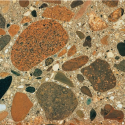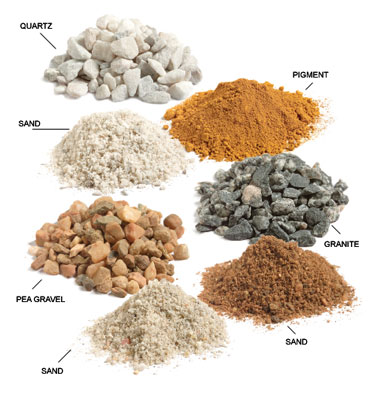Concrete is the world’s most widely used construction material due to its versatility, durability, sustainability, and economy.
The United States uses about 180 million cubic meters of ready mixed concrete each year in highways, parking garages, bridges, high-rise buildings, dams, homes, floors, and numerous other applications
Concrete is a mixture of aggregates (sand + gravel or crushed stone) held together by a binder of cementitious paste, typically made up of portland cement and water. It may also contain supplementary cementing materials (SCMs), such as fly ash or slag cement, and chemical admixtures.
Concrete components
The paste may also contain entrapped air or purposely entrained air. The paste constitutes about 25% to 40% of the total volume of concrete with the absolute volume of cement is usually between 7% and 15% and the water between 14% and 21%. Air content in air-entrained concrete ranges from about 4% to 8% of the volume.
Range in proportions of concrete materials, by absolute volume.
Aggregates are generally divided into two groups: fine and coarse. Fine aggregates consist of natural or manufactured sand with particle sizes ranging up to 9.5 mm; coarse aggregates are particles retained on the 1.18 mm (No. 16) sieve and ranging up to 150 mm in size. The maximum size of coarse aggregate is typically 19 mm or 25 mm. An intermediate-sized aggregate, around 9.5 mm, is sometimes added to improve the overall aggregate gradation.
Aggregates
Since aggregates make up about 60% to 75% of the total volume of concrete, their selection is important. Aggregates should consist of particles with adequate strength and resistance to exposure conditions and should not contain materials that will cause deterioration of the concrete. A continuous gradation of aggregate particle sizes is desirable for efficient use of the paste.
The freshly mixed (plastic) and hardened properties of concrete may be changed by adding chemical admixtures to the concrete, usually in liquid form, during batching. Chemical admixtures are commonly used to: (1) adjust setting time or hardening, (2) reduce water demand, (3) increase workability, (4) intentionally entrain air, and (5) adjust other fresh or hardened concrete properties. The quality of the concrete depends upon the quality of the paste and aggregate and the bond between the two.
Aggregates
In properly made concrete, each particle of aggregate is completely coated with paste and all of the spaces between aggregate particles are completely filled with paste, as illustrated in the next figure.
Cross section of hardened concrete made with (top) rounded siliceous gravel and (bottom) crushed limestone. Paste completely coats each aggregate particle and fills all spaces between particles.






